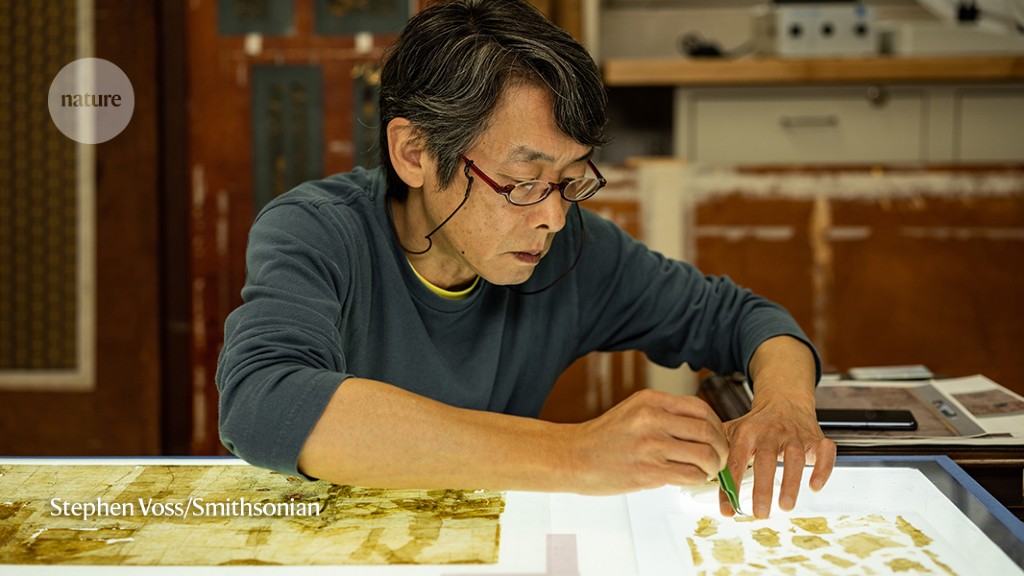I started working in 1996 at the Smithsonian National Museum of Asian Art in Washington DC. I came from Japan, thinking it would be interesting to stay in the United States for a couple of years. Twenty-seven years later, I am still here, and still using the same traditional techniques to repair artwork, such as this thirteenth-century Buddhist painting The Miraculous Interventions of Jizo Bosatsu.
In the photograph, I am using a pair of tweezers to carefully remove layers of lining paper and patches built up from centuries of repairs. Some creases have developed along the scroll that have caused the pigments to flake and powder. I can eliminate those creases by moistening the painting to make the paper expand and relax.
Sometimes ‘foxing’ — blemishes from mould spores, and other impurities — appears on the scroll. In the West, people often think these stains need to be bleached, but purified water can greatly reduce them without using chemicals.
Here, I’m taking the scroll apart; the next step is to put it back together using new patches of similar paper over the holes that have arisen with age. I will re-line the scroll with paper made from mulberry-tree fibres, using traditional wheat-starch paste as an adhesive.
Japanese art conservation is not just about the finished product, it is also about preserving the cultural heritage. The philosophy behind art conservation is the only aspect of my work that has changed in 27 years: previously, if a work was damaged, we would completely remount it. Now we do as little as possible so that we can preserve the whole object.
It is most important to find the right balance between repairing something to make it stable and functional, and protecting as much of the existing craft as possible. It takes years of experience to look at an ancient artefact such as this and understand what is necessary to repair it. I find it highly fulfilling to be part of this process.







More News
Author Correction: Bitter taste receptor activation by cholesterol and an intracellular tastant – Nature
Audio long read: How does ChatGPT ‘think’? Psychology and neuroscience crack open AI large language models
Ozempic keeps wowing: trial data show benefits for kidney disease